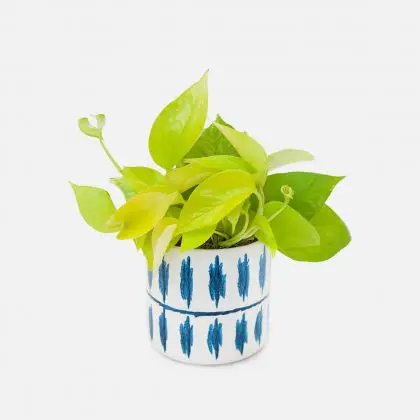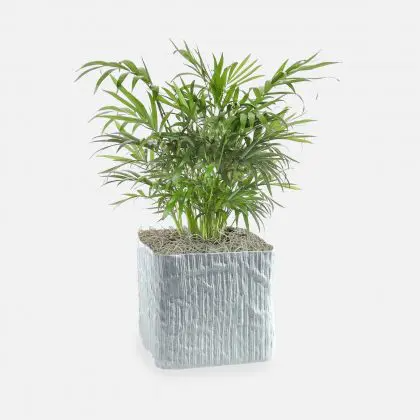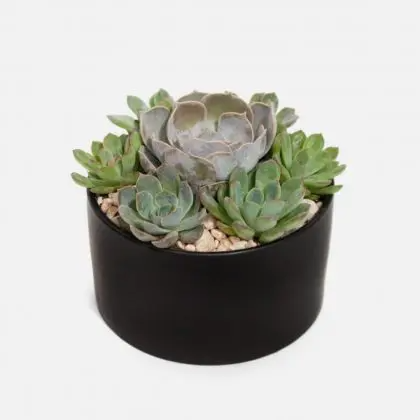Queen Palm or Cocos palm
Available on backorder
Queen Palm Tree, scientific name Syagrus romanzoffiana, is one of the most popular palms in tropical and subtropical climates because of its beautiful appearance and low maintenance. This palm is also very inexpensive. Groupings of three or more Queen Palms provide soft filtered sunlight perfect for shade gardens. It is also worth mentioning, that the Queen Palm tree has a shallow root base and is known for falling during high winds and hurricanes. They are fairly cold hardy also for a palm tree.
Queen Palm Tree Info
Scientific name: Syagrus romanzoffiana
Common names: The Queen Palm is also known as Cocos Plumosa, and Jeriva Syagrus romanzoffiana.
Family: Arecaceae
Origin: It is native to the South American woodlands of Brazil and Argentina.
Appearance: Syagrus romanzoffiana has a smooth single trunk ringed with leaf scars and topped with dark green feathery fronds. Pinnate leaves grow upward more so than outward. The stem of the leaf is about 5 – 15ft long and has double rows of leaflets. Each leaflet blade is approximately 18 to 36 inches long.
Flowers/Fruits: During the summer months Queen Palm will surprise you with beautiful clusters of creamy flowers on a green stalk that grows underneath its leaves. In the early winter, a green fruit will appear that will turn orange as it matures. These fruits also called “dates”, have a round shape and are about 1 inch long with one single seed inside. The Queen Palm fruit smells nice but is not editable. When dates fall to the ground they create sticky piles of rotting fruit that attract disagreeable insects.
Growth Rate: Fast. With regular fertilization, Queen Palm can grow to a maximum height of about 30 – 40 ft and 5 -10 ft wide. It grows around 6 feet per year after establishment.
Outdoor/Indoor Use: Both.
Light Req: Partial shade to Full sun. Queen Palm grows very well in full sun although full sun with some shade is preferred.
Water Req: Moderate. Along with proper feeding, correct watering is critical for a healthy Queen Palm. Newly planted palms should be watered every day for the first week, every other day for the second week, and about 3 times a week afterward. Watering palm 3 times a week should be enough during the first summer and a minimum of twice a week in the winter.
Maintenance: Easy. Queen Palms should be fertilized with a fertilizer that contains the most important minerals including magnesium, iron, copper, manganese, and nitrogen. To prevent nutritional deficiency, apply good quality palm fertilizer that has continuous-release formula twice a year during the growing season.
Fertilizer: Queen Palm requires a lot of manganese for healthy growth, not to be confused with magnesium. So, even after applying the usual fertilizer that contains manganese, it’s a good idea to add more manganese to the soil. Manganese deficiency is responsible for the “frizzy top” that you can witness on many Florida Queen Palms. That’s because most homeowners don’t know how to fertilize Queen Palm Trees properly. If you don’t treat the “frizzy top” condition, your palm tree will get weaker and eventually die. Once you notice that some of the frizzy symptoms are developing, add more manganese to the soil.
Pruning: The Queen Palm needs very little pruning, mainly to develop a strong structure. The best time to prune the Queen Palm tree is from September to the beginning of November. You can remove old fronds that got damaged during the summer with a saw. Get rid of only a minimum amount of fronds that are yellow or brown. Excessive pruning can weaken the palm and slow its growth. If you have a tall Queen Palm, you might need a ladder to reach dry fronds. If you live in Florida, it’s easy to find a company that can do it for you.
Insects and Diseases: The only pests that cause problems for Queen Palms are Palm leaf skeletonizer and scale. For more details on pests and prevention read – Palm Tree Insects. Queen Palm has a problem with Ganoderma bud rot that can kill the palm. There is no cure for it. The only thing you can do is to use prevention treatments.
Propagation: Propagated by seeds. Seeds of Queen Palm germinate better if collected from the green fruit that hasn’t ripened yet. Try to plant as soon as possible, as a dried seed is much more difficult to propagate. If you can’t plant the seeds right away, you can store them. Before storing clean the seeds from the dust, air dry them, and seal them in a plastic bag. The best storage temperature is around 65F-75F. It’s not recommended to store Queen Palm seeds for more than 4 months.
Cairo
Giza








